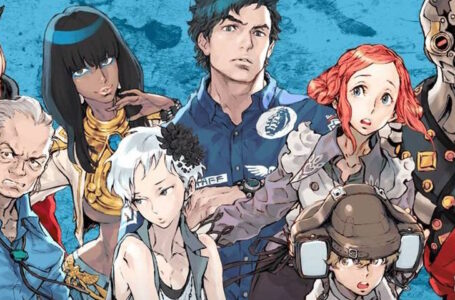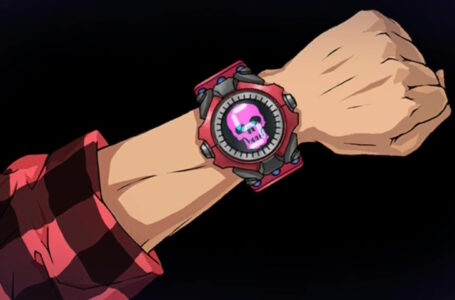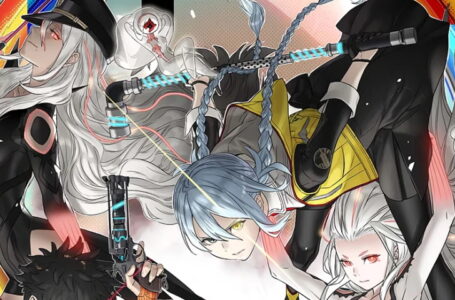Zero Time Dilemma and the art of the shattered narrative
In my run through Uchikoshi’s work for this feature, I was particularly intrigued to get to the third and final Zero Escape game, Zero Time Dilemma, because its very existence is fascinating. Not only that, but I’d managed to remain completely unspoiled on it prior to playing it — aside from the fact that I knew some folks found it to be a bit of a controversial conclusion to everything for one reason or another.
Having now played it as part of a complete run through the Zero Escape trilogy back-to-back, I will say that I feel the game absolutely benefits from being played in this way; I personally found it to be a satisfying means of wrapping the series up once and for all, even if it did leave a few intriguing loose ends here and there.
But then, the same can be said of both 999 and Virtue’s Last Reward, also, so this is certainly not out of character for Uchikoshi; he has always come across as someone who is happy for people to draw some of their own interpretations of what is going on, rather than explicitly stating them.
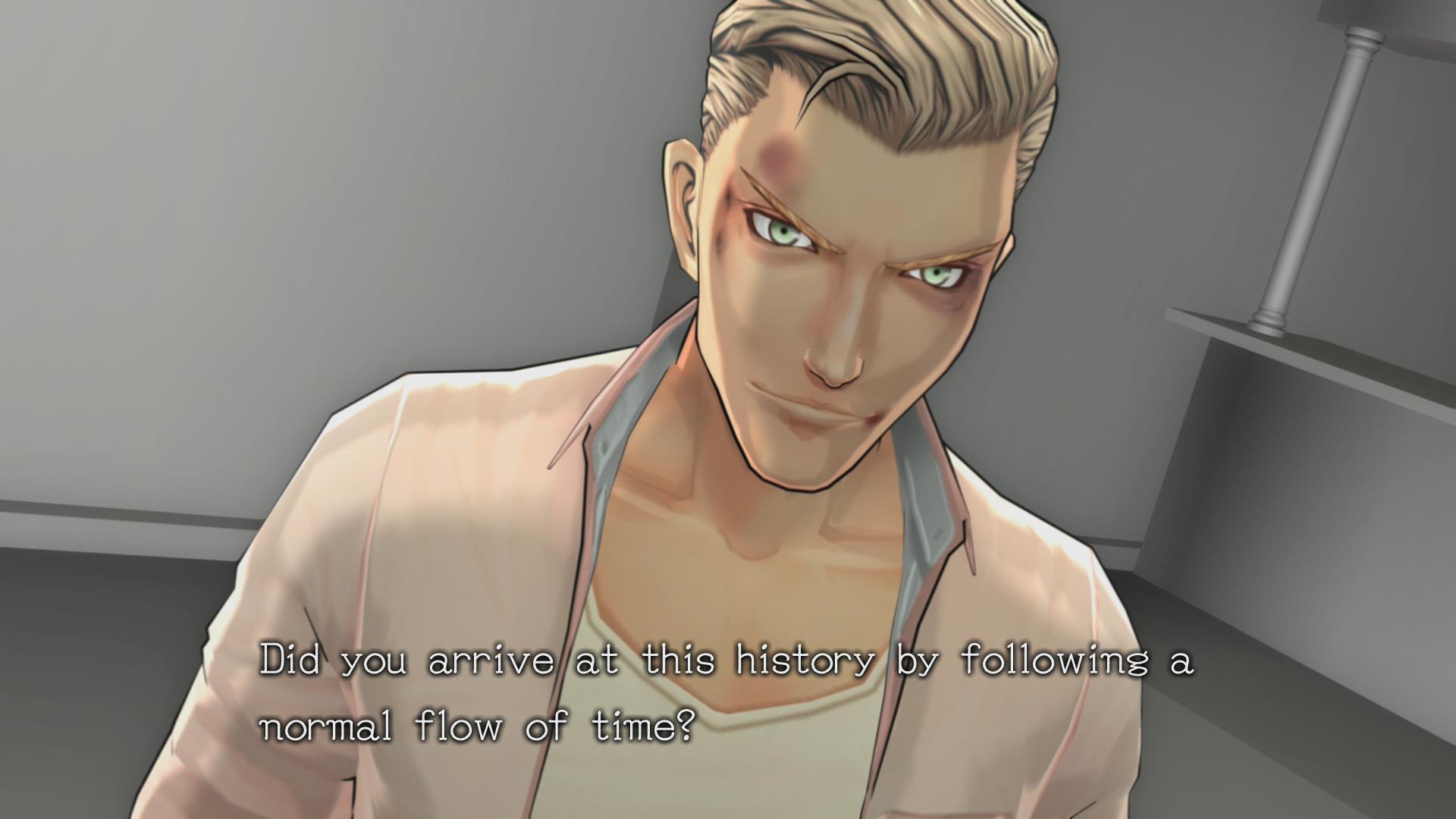
A bit of background first. Zero Time Dilemma was originally intended to be developed alongside Virtue’s Last Reward, with the two games effectively acting as a “pair”. Virtue’s Last Reward’s cliffhanger ending would lead directly into Zero Time Dilemma, and Zero Time Dilemma would answer a few questions about how the situation in Virtue’s Last Reward came to be.
Unfortunately, things didn’t quite go according to plan; a relatively tepid commercial response to the series in its native Japan meant that Zero Time Dilemma almost never happened. It wasn’t until a worldwide show of support for the series, which became known as Operation Bluebird, that Uchikoshi was able to secure the support he needed to finish the series and bring things to a definitive conclusion once and for all.
Owing to the long gap between Virtue’s Last Reward and Zero Time Dilemma, the two games came out feeling quite different from one another — but still recognisably Zero Escape in nature and tone. Probably the biggest change is that Zero Time Dilemma is significantly more violent than the previous games in the series; Uchikoshi and company felt like for the finale that they shouldn’t hold back on depicting things that would put the player on edge, and supposedly took aim for a CERO Z (18+) rating during development; it ended up only getting a CERO D (17+), but it’s still a noticeable step up from the prior two games.
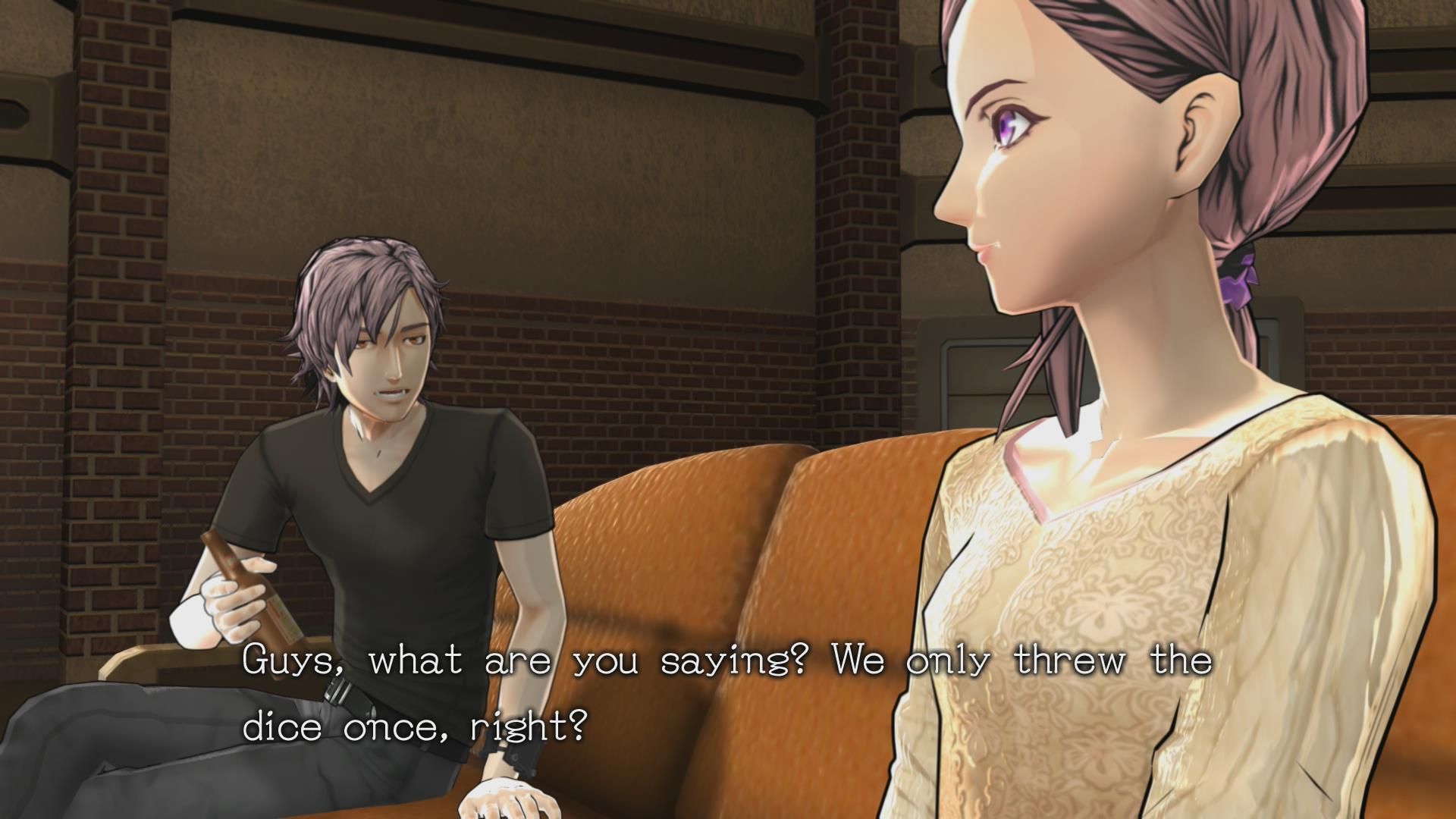
And so on to the specifics. Zero Time Dilemma canonically unfolds between 999 and Virtue’s Last Reward, and depicts the events that lead to the outbreak of the Radical-6 virus in Virtue’s Last Reward’s timeline. These were constantly hinted at throughout Virtue’s Last Reward, but no specific details were given; Zero Time Dilemma is intended to answer those questions, as well as provide players with the opportunity to change the past and prevent Virtue’s Last Reward from ever happening in the first place.
The game’s cast includes Junpei and Akane from 999 as well as Sigma and Phi from Virtue’s Last Reward, along with several new characters: ice cream seller Eric, mysterious sexy lady Mira, wholesome nice-jumper nurse Diana, heroic firefighter Carlos and an amnesiac boy with a robot head.
In a nod to series continuity, some of these characters have gone through a few changes since the last time we saw them; Junpei in particular has become rather more cynical in the year he’s spent attempting to track down Akane following the events of 999, while the Sigma in this game features his twentysomething body occupied by his 67-year old mind; getting him into this situation was essentially the entire point of Virtue’s Last Reward, as he felt it the best way to prevent that horrible future.
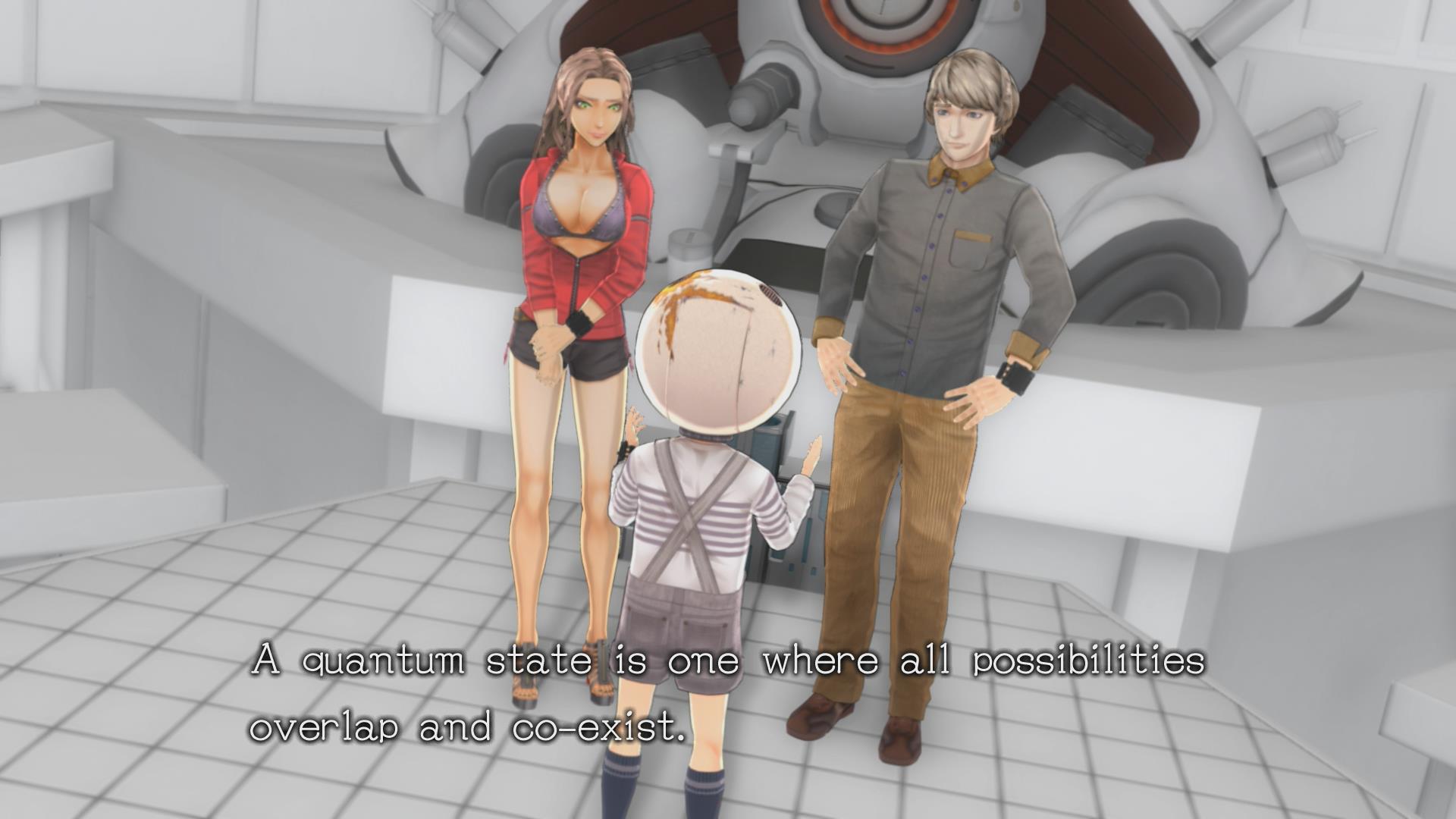
The structure of the game sees these characters split into three teams: C-team is led by Carlos and also includes Akane and Junpei; Q-team is led by the amnesiac boy and also includes Mira and Eric; and D-team is led by Diana and includes Sigma and Phi. When playing as each of the teams, you are implied to be making any important decisions as if you are their respective leaders; this becomes important in situations where the different members of the team have varying opinions on what should be done in order to proceed.
Of course, this being an Uchikoshi game, it’s actually a little more complicated than that — with varying interpretations according to whether you played the “Another Time” epilogue in Virtue’s Last Reward (which is supposedly non-canonical) and certain revelations that occur late in Zero Time Dilemma’s narrative. Regardless, for all intents and purposes, as you play through each of the game’s narrative fragments, you are essentially inhabiting the role of each of the teams’ leaders in turn.
You’ll note I said “narrative fragments”, and that’s because Zero Time Dilemma takes a markedly different approach to delivering its story to the previous two games. Rather than unfolding down discrete, linear routes with occasional branching points, Zero Time Dilemma’s narrative is shattered into pieces that can be played in almost any order. Most fragments contain an initial narrative setup, an escape room situation and some follow-up narrative that often features one or more binary choices to make — dilemmas, if you will. Many of these involve whether characters will live or die — since seemingly the only way to escape is for six of the nine characters to die.
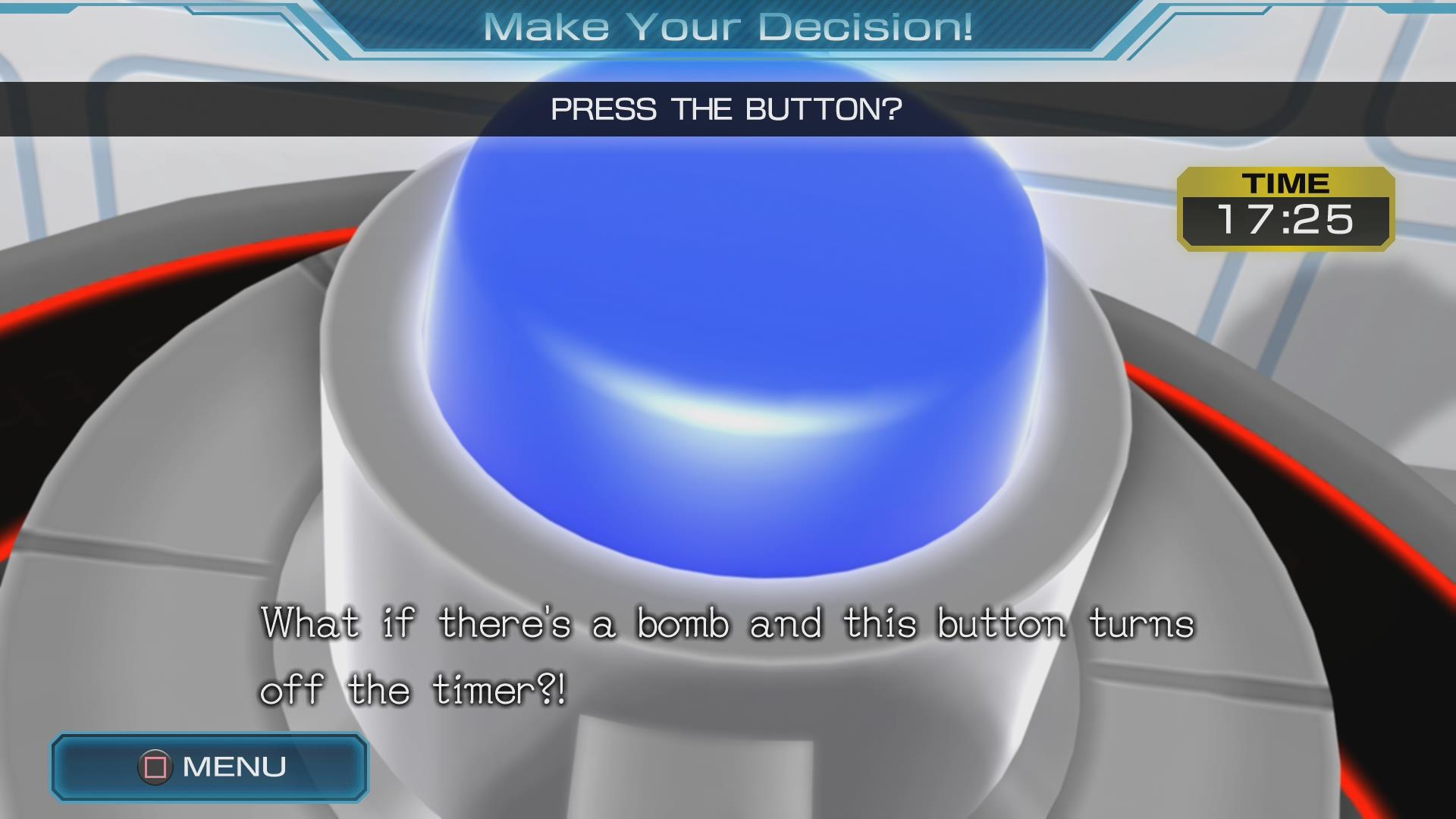
The reason for this unusual structure is the nature of the “Decision Game” that Zero Time Dilemma’s incarnation of Zero has made the participants play. Each team is only allowed to be awake for 90 minutes at a time, and once this time limit expires, they are injected with both an anaesthetic and a memory loss drug that causes them to forget everything that just happened. There are a couple of exceptions to the latter — usually when Zero wants the characters to live with the potentially devastating consequences of a choice — but for the most part, each fragment is a standalone “episode” of sorts.
As you complete each fragment, it’s placed in a global flowchart indicating roughly which point in the story it occurs. Not only that, but the flowchart indicates there are multiple possible timelines that split off from the common starting point, and as you continue to play the game you’ll find that each of these timelines lead towards various conclusions to the story — both good and bad.
Naturally, there’s a single “True” timeline that leads towards the game’s canonical finale; like in Virtue’s Last Reward, in order to follow this path, you’ll need information from the other narrative routes that must be manually entered as text.
Interestingly, Zero Time Dilemma actually incorporates an element of luck and chance into its decision points on several occasions. Part of the key theme of the game is the idea of infinite possibilities and the potential consequences that all these seemingly minor variations can lead to — and that includes variations that you have no control over, such as the flip of a coin or the throw of a dice. Indeed, it’s technically possible to “finish” the game within the first five minutes if you get lucky in the game’s very first choice.
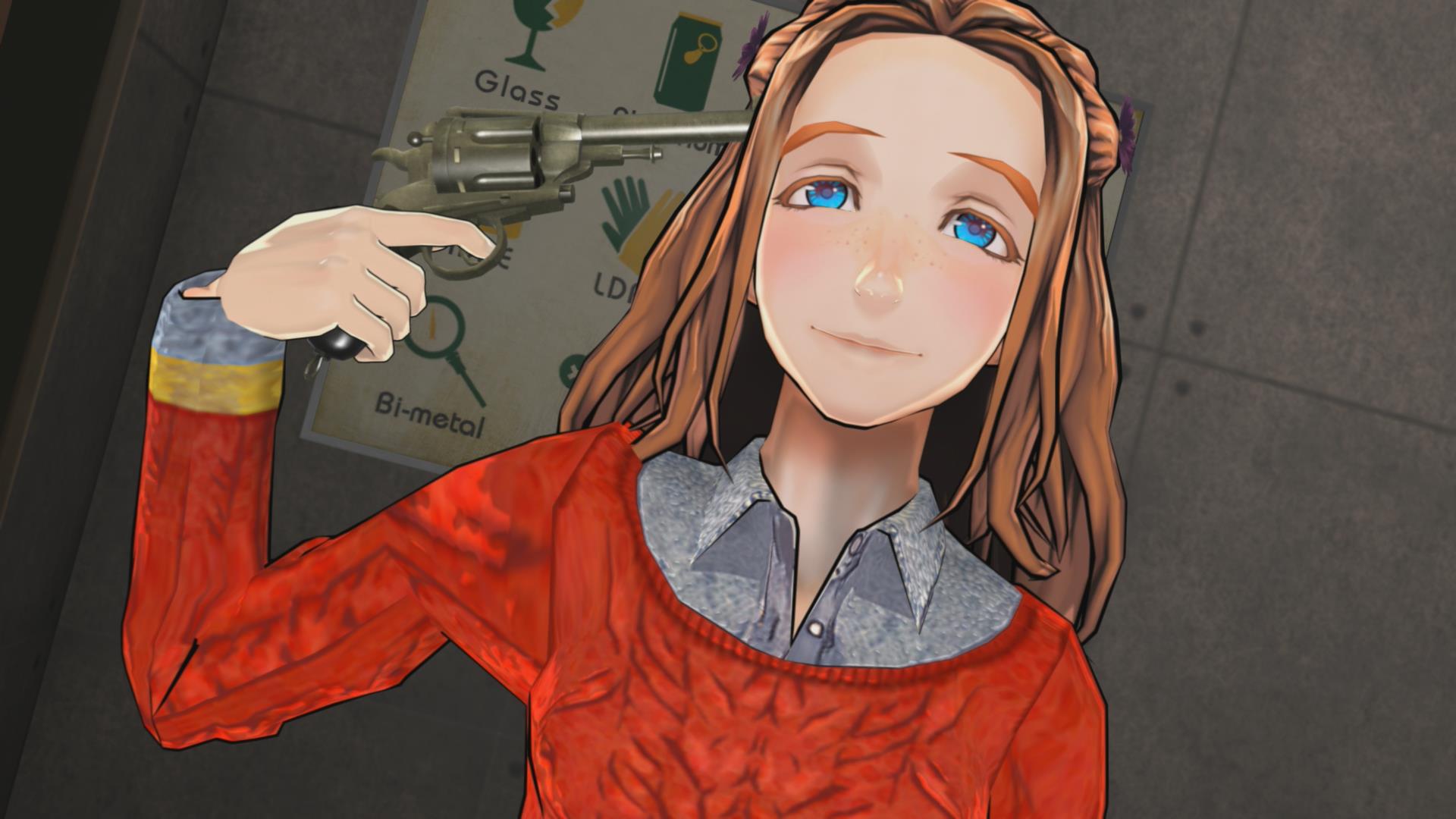
Thankfully, for the sake of gameplay, this seemingly luck-based element is heavily weighted in favour of the player, in that if you get unlucky twice in succession, your third attempt will inevitably be a success. Likewise, if you happen to get lucky the first time, it’ll take no more than two additional attempts to see the consequences of being unlucky. And, as upsetting as those consequences can be, it’s often necessary to see those negative outcomes in order to glean important information for later.
Much like how AI: The Somnium Files – Nirvana Initiative updates its flowchart to reflect information you receive as part of a major revelation in the plot, so too does Zero Time Dilemma. A specific moment in the story stretches out the global flowchart to provide a much more accurate depiction of what happens when, and it’s at this point that you can really start piecing things together and figuring things out.
By this time, you will have likely already reached some interesting possible conclusions to the story — including the “bad” timeline that leads to the events of Virtue’s Last Reward, and another, completely separate timeline which effectively ensures the entire Zero Escape series happens in the first place — and there are a ton of interesting twists and turns along the way. Characters who might have initially seemed unconnected to everything become extremely important, and a few outright horrifying revelations make you look at certain other characters in a completely different way from thereon.
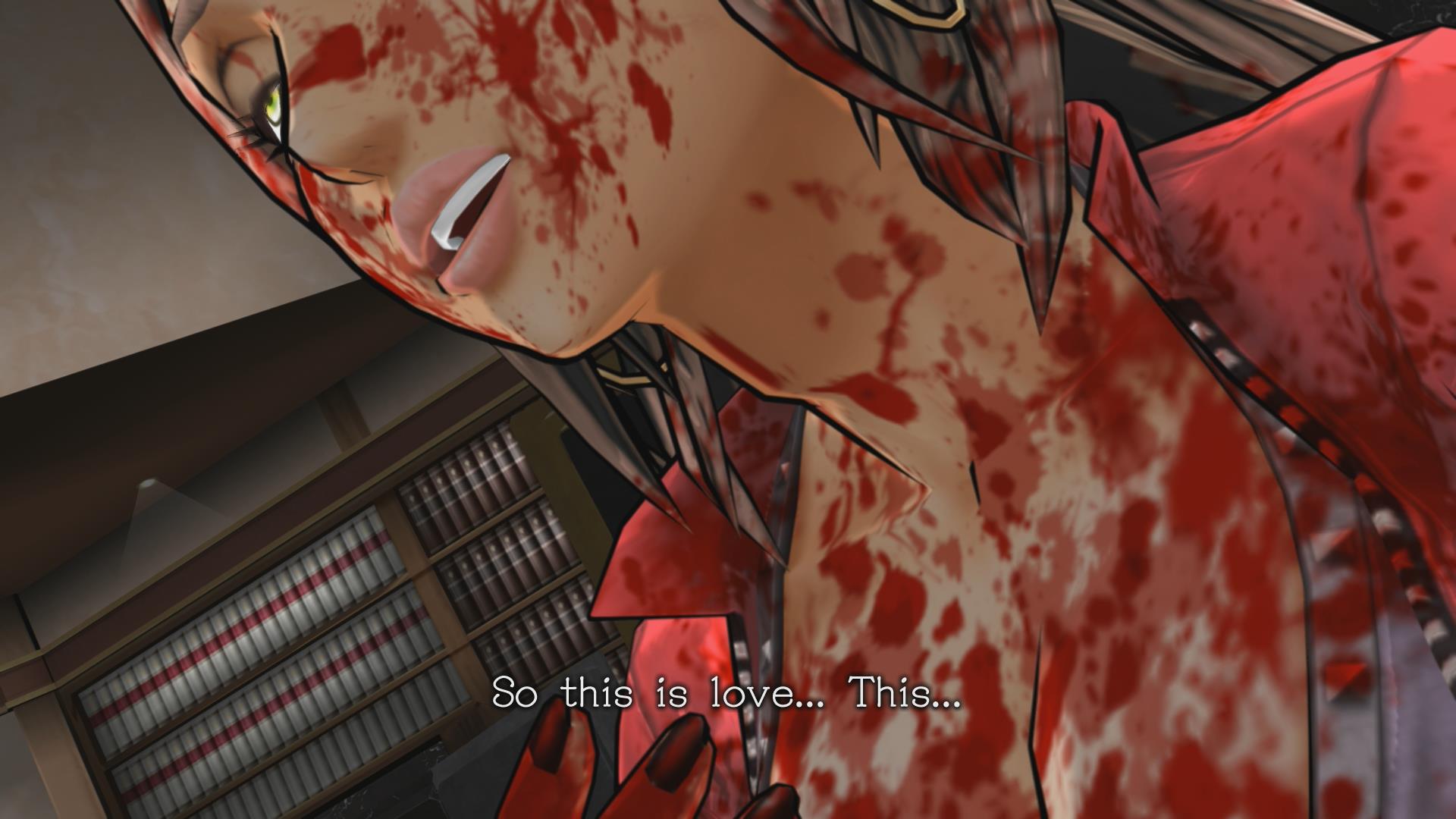
It’s potentially quite confusing, yes, but it does make internal sense. And while there are some loose ends and ambiguous moments along the way, the whole experience does act as a satisfying conclusion to the story as a whole — while arguably leaving just the faintest hint of an opening for a possible follow-up one day in the future if Uchikoshi ever decides he wants to make another one.
Outside of the narrative, Zero Time Dilemma is also markedly different from its predecessors. The game ditches the visual novel-style presentation of its predecessors in favour of fully animated cutscenes inspired by games such as Telltale’s episodic adventures; indeed, the game’s cel-shaded look is more than a little reminiscent of a Telltale game. Thankfully, the game still includes visual novel-style convenience features such as a backlog of conversations — essential for some of the game’s secrets and codes that you’ll need to write down — and the flowchart can be pulled up at any time to jump back to previous scenes.
This raises an interesting point about Zero Time Dilemma’s choices: on the one hand, they’re clearly supposed to be weighty moral choices that the characters are intended to agonise over. On the other, in our position as player, we’re given the opportunity to see both possible outcomes to a particular situation, even where one is fatal.
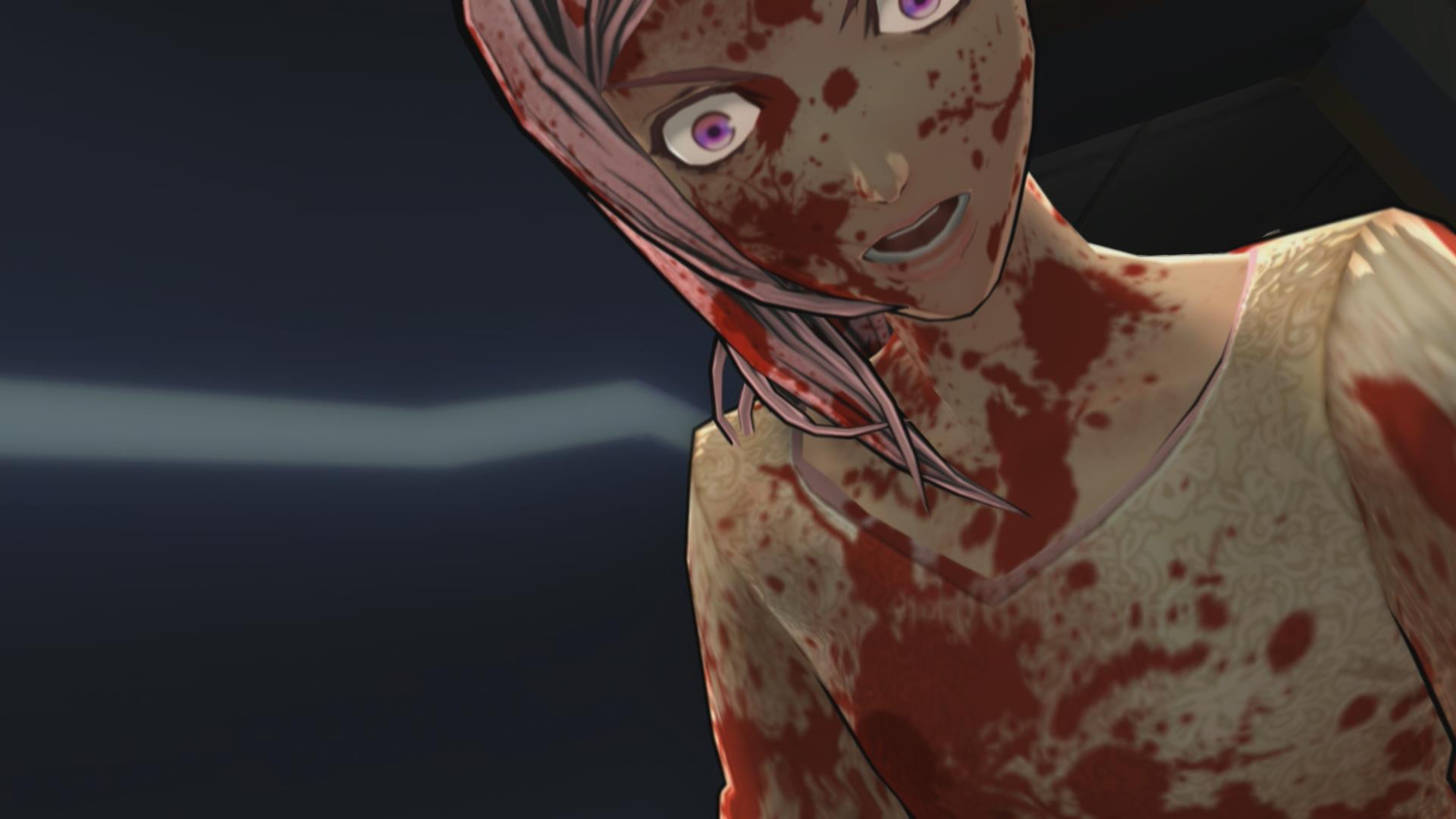
This arguably removes a certain sense of tension from the player, but also raises some interesting questions over the very role of the player in a game like this: are we supposed to immerse ourselves in the role of the protagonist characters, or are we supposed to observe things from a detached, omniscient perspective, considering all possible outcomes and then following through on the most favourable one?
The answer in Zero Time Dilemma’s case is clearly the latter — and an intriguing reason is provided for this in the late game — but it would certainly be understandable for someone to think the former, particularly given the way many other games are set up. And besides, on more than one occasion in Zero Time Dilemma, it’s actually necessary to follow up on unfavourable outcomes to see other possible conclusions to the story; it’s not unusual for the flowchart to reach a “Game Over” for one of the teams, then continue with the others after that point!
Gameplay-wise, the room escape sequences are as enjoyable and well-designed as they’ve ever been — though they’re not quite as tough as some of the puzzles found in Virtue’s Last Reward, and there’s no “Hard” mode; characters will always offer hints and advice if you’re not sure what to do next, though they’ll stop short of giving you the actual answers. Probably the most helpful thing they do is indicate whether or not you’re ready to solve a specific individual puzzle in a room, or if you should look for more information first.
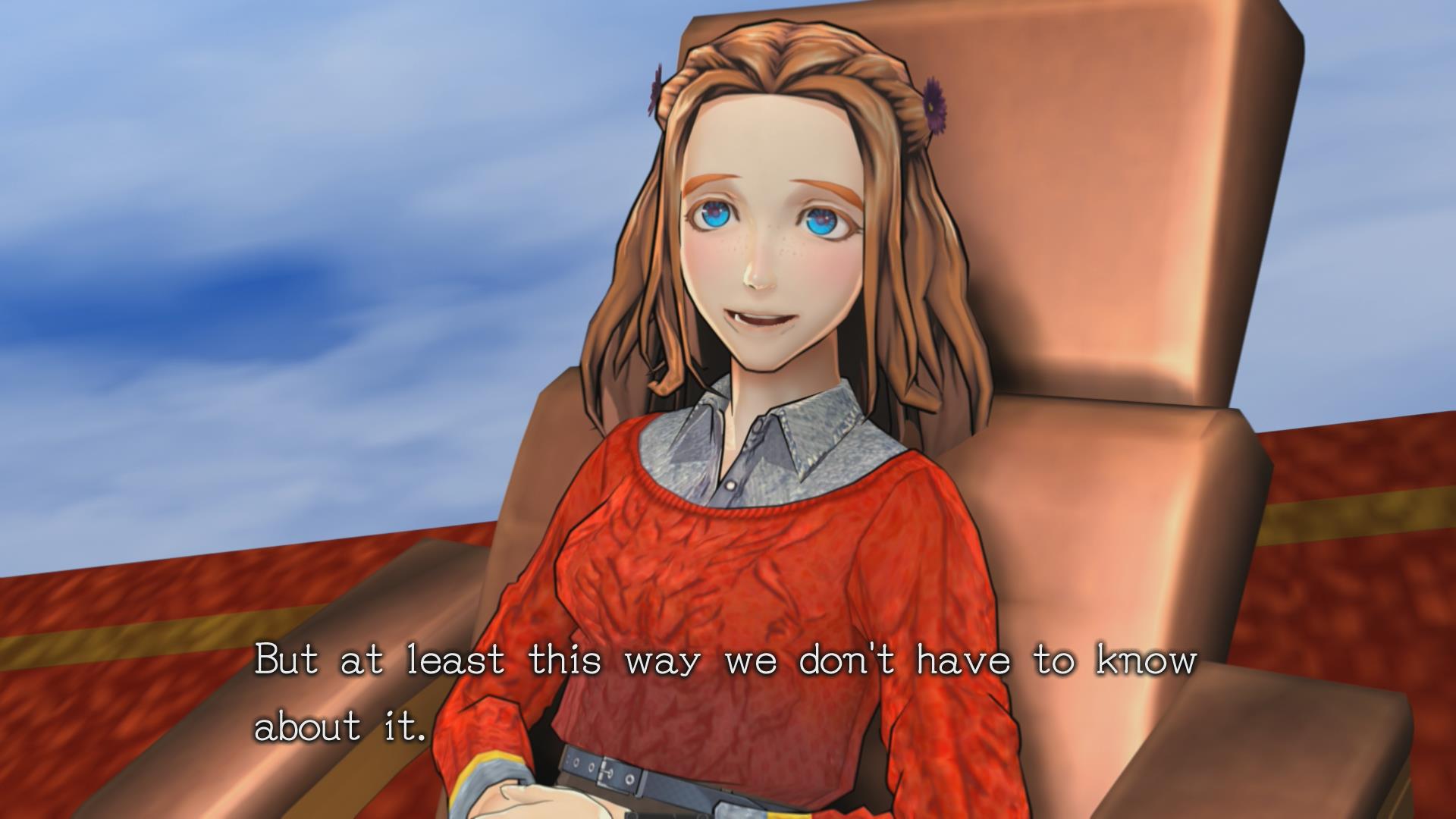
A few of the puzzles are worth bringing along a pen and paper to help you work out; Zero Time Dilemma does feature the same on-screen “Memo” feature as Virtue’s Last Reward, but once again this is largely impractical to use with a controller, so it’s easier to just scribble things down in a notepad when it comes to more complex word or maths puzzles. Gamers of a certain age will love this, but even if the very prospect of this has you reaching for a walkthrough, I’d encourage you to at least have a go at solving the puzzles yourself first; it’s immensely satisfying when you do figure things out for yourself!
All in all, I really enjoyed Zero Time Dilemma. It feels like a fitting conclusion to the series, and gives a number of characters a pleasing amount of closure — even if it is in alternative timelines in some cases! It also features some of the series’ most truly horrifying bad endings, so if you enjoy that sort of thing you’ll have a good time. And, of course, most importantly, if you enjoy Uchikoshi playing with narrative conventions and structure, you’ll definitely have a blast here.
Zero Time Dilemma is available now for Windows PC via Steam, PlayStation 4 and PlayStation Vita.
Join The Discussion
Rice Digital Discord
Rice Digital Twitter
Rice Digital Facebook
Or write us a letter for the Rice Digital Friday Letters Page by clicking here!
Disclosure: Some links in this article may be affiliate links, which means we may earn a small commission if you make a purchase after clicking on them. This is at no additional cost to you and helps support Rice Digital!
- Letter from the Editor: passing the torch - June 30, 2023
- Super Woden GP 2 is looking promising - June 30, 2023
- Inti Creates is making a 32 bit-style Love Live action platformer - June 26, 2023





